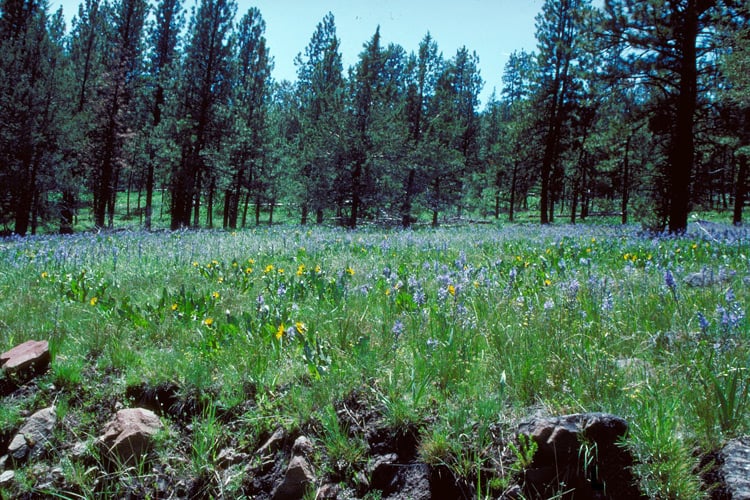
Here’s the link.
Here is a quote.
But it’s precisely that flexibility that worries Peter Nelson, federal lands director at Defenders of Wildlife. “Flexibility absent consistent guidance can lead to a variety of outcomes for water and wildlife,” he says, “not all of them good.” For instance, “the proposal directs forest managers to provide for the viability of species” — to make sure, in other words, that no species is at risk of extinction. “But it also says that if you’re not able to, you don’t have to. And it’s not clear to me how forest managers are required to prove that they can’t.”
The proposed rule requires forest supervisors to develop plans that “maintain or restore the structure, function, composition, and connectivity of a healthy and resilient ecosystem,” writes Tony Tooke, the agency’s director of ecosystem management coordination, in an e-mail. Yet there’s little in the rule to define those terms.
“How will you or I know that we’ve walked into a resilient ecosystem?” Nelson says. “There’s no clear criteria set out in the draft to determine that.” Nor does it require proof in numbers that such an ecosystem is, as the proposal assumes, beneficial to a variety of wildlife. “I’m afraid the Forest Service thinks monitoring at the species level is burdensome,” Nelson says. “I think of it as a trust-building exercise.” With ecosystem protection as with nuclear arms control, it’s “trust, but verify.”
In short, the new rule leaves a lot up to the discretion of local forest managers. That’s not necessarily bad: Forest supervisors can observe changes at the local level that would elude bureaucrats in D.C. “It’s hard at the regulation level to provide any one-size-fits-all standard,” says Martin Nie, associate professor of natural resource policy at the University of Montana. “I can think of some forest supervisors who’ll go to town with this thing in terms of meaningful standards and requirements.”
Local supervisors under pressure from politics or industry, however, could theoretically veer in a less constructive direction. “The pushback is always economics,” says Congressman Raúl Grijalva, D-Ariz., who has criticized the proposal for weakening wildlife protection. “But when you have habitat shrinking, species disappearing and wild places not being protected, your decision-making can’t be subjected to biased outside pressure. You have to have strong federal oversight to make sure what you do is based on facts and science.”
Timber and other industry interests have not yet commented on the rule, except to say they’re watching it closely. Meanwhile, the Forest Service will take public comments through May 16.
Francis thinks everyone should consider contributing. For Westerners, “the planning rule affects everything from where you hike to the quality of your drinking water.” After all, it’s your plane the agency is piloting, he says, “and you need to have some way of knowing whether it’s staying on course.”
The funny thing about this to me is that I think I agree with Peter, for opposite reasons. He sees the FS requiring conceptual ideas like resilience as questionable, because he doesn’t know that the concept means what he wants (protecting species). I don’t like requiring concepts in regulations because judges will ultimately decide anything fuzzy based, more than likely, on their own views.
In any conflictual writing exercise (say legislation, writing plans), fuzzy and vague seems good at first because everyone seems to get what they want. It’s when the poor implementers take it forward (and get litigated) we realize that we just postponed, and changed the arena of, the conflict.
Here’s a quote from Martin in the same article:
In short, the new rule leaves a lot up to the discretion of local forest managers. That’s not necessarily bad: Forest supervisors can observe changes at the local level that would elude bureaucrats in D.C. “It’s hard at the regulation level to provide any one-size-fits-all standard,” says Martin Nie, associate professor of natural resource policy at the University of Montana. “I can think of some forest supervisors who’ll go to town with this thing in terms of meaningful standards and requirements.”
But it’s not the supes we really have to worry about.. at least according to Congressman Grijalva..
Local supervisors under pressure from politics or industry, however, could theoretically veer in a less constructive direction. “The pushback is always economics,” says Congressman Raúl Grijalva, D-Ariz., who has criticized the proposal for weakening wildlife protection. “But when you have habitat shrinking, species disappearing and wild places not being protected, your decision-making can’t be subjected to biased outside pressure. You have to have strong federal oversight to make sure what you do is based on facts and science.”
I guess it’s politicians ;).